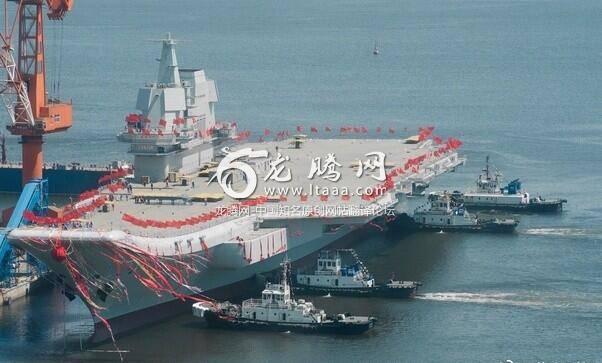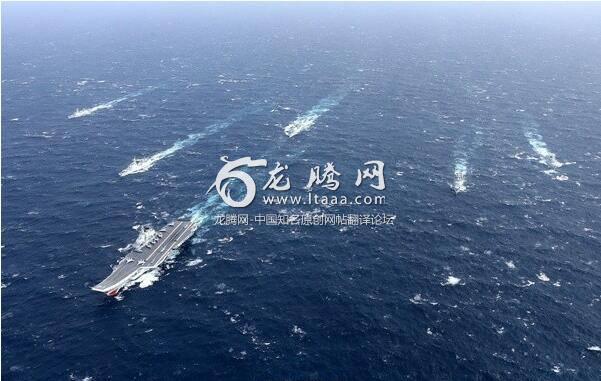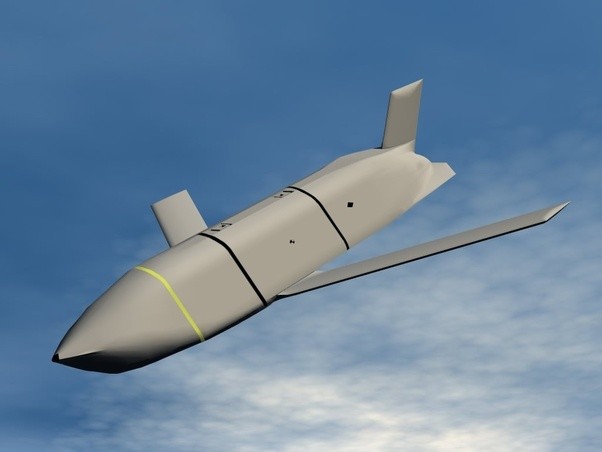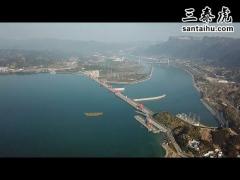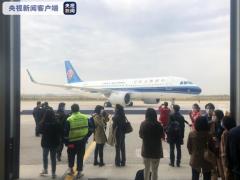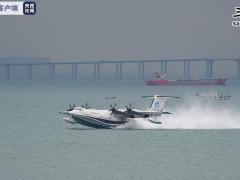如果中国开始每年建造两艘新的航空母舰,美国会如何反应? [美国媒体]
quora网友:在公开场合,美国国防部会要求更多的资金来建造更多舰船,以跟上中国的步伐,私下里他们会笑得屁滚尿流。原因是中国人没有建造航母的经验 ( 记住,他们现在的航母是非核动力的,是从俄罗斯买来改装的航母 ) ......
What would the US response be if China started laying down 2 new aircraft carriers a year
如果中国开始每年建造两艘新的航空母舰,美国会如何反应?
Doug Hanchard, Aviator with 7,000+ hours CPL, ATPL Pitt S1 to DC-8's and B-707's.
道格 · 汉卡德,飞行员,七千小时以上飞行经验,从CPL,ATPL Pitt S1到 DC-8和 B-707各种机型
Politically, there are several options available. But before an answer can be suggested, the strategic and tactical implications have be reviewed. Asiatic military expansion is long overdue, from their perspective. China barely invested in military arms between 1975 and 1990. It never considered a blue water Navy fleet and did not have the means or technical capability to do so. It took another 10 years to invest and focus on STEM subjects. That pipeline of well educated students has now matured and entered the workforce. The graduation rate of Master's Degree and PhD's went from 50,000 in the 1990’s to over 200,000 between 2000 and 2005. Today, they now graduate over 1 million per year.
Military doctrine and the ability to take advantage of these advancements takes time. China had just begun flight operations and field exercises with its first refurbished Russian built aircraft carrier. The People's Liberation Army - Navy (PLAN) last naval combat experience was during the Korean War in 1952 using light destroyers.
It will take PLAN at least 5 years to determine how to effectively implement and operate a large carrier battle group. Tactics will prove challenging as they discover limitations and required support services required to operate in three primary roles;
Foreign Affairs - Force projection (Africa / Indian Ocean)
Coastal Defense (South China Sea)
National Security (Counter-measures USN)
在政治上,有几种选择。但是,在给出答案之前,我们将对战略和战术方面的影响进行评估。从他们的角度来看,亚洲的军事扩张早就应该进行了,1975至1990年间,中国几乎没有在军事领域投资,它从未考虑过蓝水海军舰队,也没有这样做的手段或技术能力,中国花了10年的时间来投资和专注于STEM学科,这批受过良好教育的学生现在已经成熟并进入劳动力市场,硕士和博士的毕业率从1990年代的50,000上升到2000至2005年间的20多万,如今,他们每年毕业生超过100万人。
军事理论和利用这些进步的能力需要时间,中国第一艘翻新的俄罗斯建造的航空母舰刚刚开始飞行和实操演习。中国人民解放军海军( PLAN ) 最后一次海上作战经历是在1952朝鲜战争期间,使用的是轻型驱逐舰。
一个大型航母战斗群的有效实施和运营至少需要5年的时间,当他们发现运作中三个主要角色所受的限制和所需的支持服务时,战术上会证明这种策略是非常具有挑战性的;
· 外交事务--军队预测 ( 非洲/印度洋 )
· 海防 ( 南海 )
· 国家安全 ( 应对美国海军 )
Aircraft Carrier effectiveness is often misunderstood. When unopposed, they are formidable threats. But the dynamics drastically change if threats from both submarines and surfaces ships include opposing aircraft carriers.
China's decision to have at least two aircraft carriers is logical. The government's expansion plans, both economically (strategic commodity reserves - oil) and territorially (trade routes)should come as no surprise to any Western nation. How they have approached these obxtives using military projection has been described as blunt force, in your face, mass presence.
Ever since natural gas has been discovered on the ocean floor near the Spratly Islands in 1978 combined with deep offshore rigs that are easy to build and operate, China knew it could potentially have a local natural resource that few could exploit.
航空母舰的有效性经常被误解。在没有对手的情况下,它们是可怕的威胁,但是,当有来自潜艇、水面舰艇包括对方的航空母舰的威胁时,这种态势就会发生了巨大变化。
中国决定建造至少两艘航空母舰是合乎逻辑的。中国政府的经济扩张计划 ( 战略商品储备-石油 ) 和领土扩张计划 ( 贸易路线 ) 应该不会让任何西方国家感到意外,他们是如何利用军事投射来达到这些目标的,这种被描述为一种“生硬”的力量(钝力),就在你们的面前,大规模的出现。
自从1978年在斯普拉特利群岛(南沙群岛)附近的海底发现天然气,再加上易于建造和操作的深海钻井平台,中国就知道它可能会拥有一种很少有人能开发的当地自然资源。
The building and installation of military weapons in the new man-made islands in the disputed area, serves three purposes;
Influence over Taiwan
Sovereignty claims.
Protect and support a region of “territorial” Ocean rights that few could challenge.
Building aircraft carriers takes a lot longer than 2 years. It can take as long as 4 if work is done with a high ratio of manual labor. China is not capable of building modular components and mating them up with a high degree of accuracy. That will change over time but it is not easily accomplished. Sea trials along can take a year or more to complete in addition to training the ships crew in addition to the air wings.
Carriers are a highly complex military weapon that takes years to master. China has a long way to go. If China achieves the ability to reach 2 carrier production over 5 years, that would be a major accomplishment in itself. Even so, the U.S. would not immediately react and would collect data to see if 2 additional hulls were being laid in shipyards before submitting a budget request for new aircraft carrier construction to Congress.
在有争议地区新建的人工岛屿上建造和部署军用装备,有三个目的:
· 影响台湾
· 主权要求
· 保护和支持一个无人可挑战和质疑的“ 领土”海洋权利区域。
建造航空母舰需要的时间远远超过两年,即使用高比例的体力劳动来完成工作,也至少需要4年之久。
中国没有能力制造出模块化的部件,并将它们精确地匹配起来,这将随着时间的推移而改变,但这并不容易实现。
海上试验可能需要一年或更多的时间来完成,除了训练船舶船员以外,还需要训练飞行员。
航母是一种高度复杂的军事武器,需要多年的时间才能掌握,中国还有很长的路要走。
如果中国能在5年内达到2艘航母的产量,这本身就是一项重大成就。
即便如此,在向国会提交建造新航母的预算请求之前,美国也不会立即做出反应,而是会收集数据,以确定是否在造船厂再增加2个船体。
—————————2———————————
Rahul Jayantilal Patel, I know a little about the DoD.
拉胡尔 · 贾安提尔 · 帕特尔,对美国国防部有一点了解。
Upvoted by Jeremy Casanave, former Chief Intelligence Specialist at United States Navy (1998-2007) and James Sharrow, former Logistics Specialist at United States Navy (2009-2014)
以上是Quora机器人的标注:
前美国海军首席情报专家(1998-2007)杰里米 · 卡萨纳夫 点赞
前美国海军后勤专家(2009-2014)詹姆斯 · 沙罗 点赞。
In public the DoD would demand more money to build more to keep up with China. In private they would be laughing their asses off. The reason for this is because the Chinese doesn't have experience in building (remember their current one is a non-nuclear and is revamped carrier bought from Russia which then was retrofitted) carriers. The nuclear propulsion technology the US uses is HIGHLY classified. The US has been designing and building aircraft carriers and other ships since World War 2 and they still have issues. Even if China starts laying down the keels for aircraft carriers they still have a multitude of issues to overcome to make a carrier comparable to the US. During that time the US would continue to enhance the technology on their own carriers. China had to reverse engineer the technology for a steam catapult, while the new Ford class has electro magnetic catapults. Not the mention they would have redesign their aircraft to be launched and land on a carrier.
在公开场合,美国国防部会要求更多的资金来建造更多舰船,以跟上中国的步伐,私下里他们会笑得屁滚尿流。原因是中国人没有建造航母的经验 ( 记住,他们现在的航母是非核动力的,是从俄罗斯买来改装的航母 ) 。
美国使用的核推进技术是高度机密的,自第二次世界大战以来,美国一直在设计和建造航空母舰和其它船只,但它们也仍然存在问题。
即使中国开始为航空母舰铺设龙骨,他们仍有许多问题需要克服,才能使航母与美国相提并论。在此期间,美国将继续加强本国航母的技术,中国不得不对蒸汽弹射器的技术进行逆向工程,而新的福特级则拥有电磁弹射器,更不用说,他们还得重新设计他们的飞机以便使其能在航空母舰上起降。
Secondly China will have to go through the growing pains of how man and logistics of how supply a carrier at sea. Then the maintenance of a carrier is a big job. The US has 10 active carries and one going through testing, about 1/3 is in maintenance at anytime. Maintenance takes a whole different set of skills than building a carrier.
Logistics is another huge piece of the puzzle. Sure you may have a nuclear propulsion system that does not need to be refueled. You still have supply the people on the ship. Which in my opinion is the hardest part about running a military.
其次,中国将不得不经历日益增长的痛苦,即如何在海上提供航空母舰的人员和后勤保障,维持航母是一项艰巨的任务,美国有10艘现役航母,其中1艘正在进行测试,大约1/3的航母随时处于维修状态,与建造航空母舰相比,维护需要一套与建造航母完全不同的技能。
后勤保障是另一大难题,当然,你可能有一个不需要加油的核推进系统,但你还得为船上的人提供补给,在我看来,这是管理军队最难的部分。
A carrier is not deployed alone, the carrier is the main piece of a strike group. So China would have build the ships that are part of the group. Which would take time also, then training the sailors of the different ships to work as a group will also time and effort. Not the mention the training the pilots to launch and land on a carrier properly is a lot of work.
It am not saying China can't do it, it will take some time for China to become as proficient as the US.
航母不是单独部署的,航母是打击群的主体,因此,中国还需建造属于该打击群的其它的舰船,这也需要时间,然后训练不同船只的水手集体工作也将花费大量时间和精力,更不用说训练飞行员正确起飞和降落在航母上是一项艰巨的工程。
这并不是说中国做不到,但中国需要很长一段时间才能像美国一样熟练。
—————————3———————————
Rick Wang, Professional Quora basher that knows a bit about China.
Rick Wang,专业Quora捣蛋,对中国有一些了解。
They don’t have to do anything. If China lays down 2 carriers every year, by year 10 China would be essentially broke and in chaos. CSGs are expensive to build and maintain. Credits to Jones Averino, he did some simple calculations to find out around how much it costs to build an entire CSG in one of his answers.
1 x Nimitz-class aircraft carrier : $6.2 billion (Supposing that China will start making similar levels of carriers)
7 x Arleigh Burke-class destroyer : $12.6 billion (7 x $1.8 billion)
3 x Ticonderoga-class cruiser : $3 billion (3 x $1 billion)
48 x F/A -18 Super Hornet : $3.360 billion (48 x $70 million (flyaway cost*))
4 x E-2C Hawkeye : $704 million (4 x $176 million (flyaway cost))
5 x E/A-18G Growler : $350 million (5 x $70 million (flyaway cost))
2 x C-2A Greyhound : $80 million (2 x $40 million)
12 x MH-60S Seahawk : $336 million (12 x $28 million(flyaway cost))
16 x MH-60R Seahawk : $672 million (16 x $42 million(flyaway cost))
All of this plus $200 million a year for personnel, but let’s cut that in half because the PLA pays less and it is much cheaper for China to make ships because of its industrial powers. So essentially it costs around $14 billion to build a CSG. However, the maintenance cost around $10 billion (again half of the US estimate). So that’s $28 billion for the 2 CSGs plus $20 billion for maintenance. You can see where this is going right?
The White House would be laughing their asses off.
Thankfully China is not that stupid.
他们不需要做任何事。
如果中国每年建造2艘航母,到第10年,中国就基本上破产,陷入混乱了。
航母攻击群(CSG)的构建和维护成本很高。
琼斯·阿韦里诺(注:一个答主)在一个回答中做了一些简单的计算并给出了建立一个完整的航母攻击群要花费多少钱。
1 × 尼米兹级航空母舰:62 亿美元 ( 假设中国将开始制造类似水平的航母 )
7 × 阿利·伯克级驱逐舰:126 亿美元 ( 7x18亿美元 )
3 × 泰康德罗加级导弹巡洋舰:30 亿美元 ( 3×10亿美元 )
48 × F/A-18超级大黄蜂战机:33.6 亿美元 ( 48×7000万美元 ( 出厂价格) )
4 × E-2C 鹰眼预警机:7.04亿美元 ( 4×1.76亿美元 ( 出厂价格 ) )
5 × E/A-18G咆哮者电子攻击机:3.5亿美元 ( 5×7000万美元 ( 出厂价格) )
2 × C-2A 灰狗运输机:8000万美元 ( 2 x4 000万美元 )。
12 × MH-60 铺路鹰直升机:3.36亿美元 ( 12×2800万美元 ( 出厂价格) )
16 x MH-60R 海鹰特种直升机:6.72亿美元 ( 16 x4200万美元 ( 出厂价格) )
所有这一切,再加上每年2亿美元的人员开支,让我们将其削减一半,因为中国人民解放军支付的费用较低,而且由于其工业实力,中国制造船舶的成本要低得多,因此,建立一个CSG(航母攻击群)的成本大约为140亿美元,
然而,维护费用约为100亿美元 ( 同样是美国估计值的一半 ),2个CSG就是280亿美元,加上200亿美元的维护费用,
你能看出是怎么回事吗?
白宫肯定会笑掉他们的屁股。
谢天谢地,中国没那么蠢。
(。。数学估计是体育老师教的。。)
—————————4———————————
Shane Rooney, lives in China
谢恩 · 鲁尼,住在中国
There are 3 points that should be addressed when answering this question:
How long does it take to build a modern aircraft carrier?
How big are the carriers? (super aircraft carriers or an aircraft carrier)
How will China's aircraft carriers stack up against those of the United States? How concerned should the U.S. Navy be with these developments?
在回答这个问题时,有三点需要解决:
· 建造一艘现代化的航空母舰需要多长时间?
· 航母有多大?( 超级航空母舰或普通航空母舰 )。
· 中国的航空母舰将如何与美国的航母相抗衡?美国海军应该如何关注这些发展?
For a rough estimate, let’s say:
that China can build 1 carrier (from start to finish) in about 10 years. Which is pretty close to what they are currently building their carriers at.
Each carrier has an average of half as many planes as US carriers, which is accurate when comparing the 36 aircraft (including 24 jets) on the Liaoning* vs average aircraft capacity of US carriers at around 50 jets.
And finally, each Chinese plane operated at 80% the proficiency of US planes.
*RE: August 2014, the Chinese-language Shanghai Morning Post. 36 aircraft: 24 Shenyang J-15 fighters, six Changhe Z-18F anti-submarine warfare (ASW) helicopters, four Changhe Z-18J airborne early warning helicopters and two Harbin Z-9C rescue helicopters.
(These are very rough ball-park figures. If you want me to adjust them to be ‘more accurate’ then please provide detailed reasoning on why your numbers are accurate. I may then upxe my answer)
粗略估计一下,假设:
· 中国可以在大约10年内建造1艘航母 ( 从头到尾 ) ,这与他们目前建造航母的速度非常接近。
· 每艘航空母舰的飞机数量平均只有美国航母的一半,辽宁号上36架飞机 ( 包括24架喷气式飞机 ) vs 美国航空母舰约50架喷气式飞机的平均载机量,这一数据是准确的。
· 最后,每架中国飞机出勤效率都是美国飞机的80%。
根据中文报纸《晨报》的报道,辽宁号有36架飞机:24架沈阳 J-15战斗机、6架 昌河 Z-18F 直升机、4架昌河 Z-18J 空中预警直升机和 2 架哈尔滨 Z-9C 型救援直升机。
( 这些是非常粗略的数字。如果你想让我调整他们,使他们‘更准确’,那么请提供详细的推理,为什么你的数字是准确的,我可能会更新我的答案 。)
To do the math for the above (rough) numbers: China needs +25% the number of planes to get the same air-power, and needs +100% (double, so 200% total) the number of aircraft carriers to carry the same number of aircraft.
This brings us to the conclusion that China would need two and a half times the number of aircraft carriers in order to match USA’s naval air power.
How many aircraft carriers does the USA currently have? Does the US Navy have 10 or 19 Aircraft Carriers? Because I am lazy right now, lets take the larger number and round it up to 20.
By our (rough) numbers, China will need to build 50 aircraft carriers.
The first 2 carriers gets started, 10 years later they are completed. And every year after that another 2 carriers are built.The final carrier would be built 35 years after the first one started production.
给上述( 粗略 ) 数字做一个计算:中国需要+25%的飞机数量才能获得同样的空中力量,而需要+100%( 两倍,总数为200% )的航空母舰数量才能运载同样数量的飞机。
这使得我们得出的结论是,中国需要两倍半的航空母舰数量,才能与美国海军的空中力量相抗衡。
美国目前有几艘航空母舰?10 艘还是19 艘?
因为我很懒,让我们把取最大值并四舍五入一下,就算20艘吧。
根据我们的粗略数字,中国将需要建造 50 艘航空母舰。
最初的两艘航空母舰从开始建造到运作,10 年后它们就完工了,此后每年又建造了 2 艘航空母舰,最后一艘航母将在第一艘航母投产35年后建造。
How will the US react?
美国会作何反应?
They have a 35 year time gap in which to react before China is equal to the US. And remember that thanks to our (rough) numbers, China needs x2.5 the number of carriers. So if America built 2 carriers. China needs to build 5 more.
Every extra carrier that the US builds is 1.5 years worth of construction that the Chinese must produce to match. If US built 1 carrier per year they will quickly out pace the Chinese.
If America built 2/ 3rds of a carrier each year (that is, if USA built 2 carriers every 3 years), then the US can match China’s build speed in terms of naval airpower created each year. And if USA started this before the end of the 35 years then they can stay 1 step ahead of China.
在中国与美国平起平坐之前,美国有35年的时间间隔可以做出反应。
请记住,由于我们的( 粗略 )数字,中国需要 x 2.5 的航母数量,所以如果美国建造了 2 艘航母,中国还需要再建 5 艘。
美国建造的每一艘额外的航母都需要1.5年的建设时间,而中国必须生产与之相匹配的航母。
如果美国每年建造一艘航母,他们很快就会赶上中国。
如果美国每年建造2/3艘航空母舰 ( 也就是说,如果美国每3年建造2艘航母 ),
那么美国每年创造的海军航空力量就可以赶上中国的建设速度,如果美国在35年前就开始这么做,
那么他们可以比中国领先一步。
In short: It would likely become an arms race that will see USA keep its naval air-power in the lead (up until the point that one side has their economy collapse and the arms race is over).
It is hard to say which side will have their economy go down the drain first. If it was a 1 for 1 arms race then I would put my money on China coming out on top. But since it is a 2.5 to 1, then maybe the US can out last China. Who knows.
简言之,这很可能成为一场军备竞赛,
美国将继续保持其海军空中力量的领先地位 ( 直到一方经济崩溃,军备竞赛结束 )。
很难说哪一方会先让他们的经济走下坡路,
如果这是一场1对1的军备竞赛,那么我会把赌注押在中国身上,
但既然是 2.5 比1,那么美国或许就能打败中国,
谁知道呢。
—————————5———————————
Lin Xieyi, Aviation Enthusiast
Lin Xieyi,航空爱好者
When China did not possess any aircraft carrier or means of power projection, the US Navy forced a Chinese container ship “Yinhe” in international waters to be inspected for suspected chemical weapons material bound for Iran which was later proven to be non-existent.[1] The United States sent 2 aircraft carrier groups to the Taiwan Strait to prevent Chinese re-unification during the Korean War. The Chinese embassy in the former Yugoslavia was bombed by a US military aircraft. A Chinese fighter jet pilot lost his life when his fighter jet shadowing a US EP-3E intelligence aircraft conducting intrusive surveillance suddenly collided with each other, forcing the latter to land in Hainan.
When the Chinese Navy launched one STOBAR aircraft carrier (Type 001 CV-16 Liaoning) and deployed it to the South China Sea, the US media hyped up the “China Threat” message but backed down when the Fiery Cross, Mischief and Subi islands were reclaimed and upgraded to provide better public services for passing ships. Philippines and Vietnam subsequently backed down from provoking China on behalf of the United States.
在中国没有任何航空母舰或力量投射手段的情况下,美国海军强行在国际水域检查一艘开往伊朗的中国集装箱船:“银河”号,称其载有可疑化学武器材料,后来被证明是不存在的。
美国在朝鲜战争期间向台湾海峡派遣了两个航空母舰战斗群,以阻止中国统一。
中国驻前南斯拉夫大使馆被美国军用飞机轰炸。
一名中国战斗机飞行员在驱离一架进行侵入性监视的美国EP-3E情报飞机时丧生,这架战斗机突然相撞,迫使后者降落在海南。
当中国海军启动第一艘短距起飞(STOBAR)航空母舰 ( 001型CV-16辽宁号 ) 并将其部署到南中国海时,美国媒体大肆宣扬“中国威胁论”,但当永暑礁(英文名:Fiery Cross Reef)、美济礁(英文名:Mischief Reef)和渚碧礁(英文名:Subi Reef )被收复和升级并为过往船只提供更好的公共服务后,美国媒体退缩了,菲律宾和越南随后放弃代表美国挑衅中国。
When the Chinese Navy launched the second STOBAR aircraft carrier (Type 001A CV-17 Shandong), US media suddenly changed tune and said that Chinese aircraft carrier launch is no proof of “China Threat”. The rotating ASEAN chair, Philippine’s Duterte refused to bring up The Hague ruling and South China Seas issue at the recent ASEAN summit despite pressure from some of the ASEAN members.
The third(CATOBAR)Chinese aircraft carrier (Type 002) is currently under construction. As China deploys more and more aircraft carriers, the US response will become increasingly muted. The entire first and second island chain of US military bases are now within striking distance of the Chinese navy and mobile missile batteries on land, making them sitting ducks and canon fodder in any future conflict to contain China’s development.
By now you should be able to predict what will be the US response when China fields six aircraft carrier battle groups in the South China Seas and the Western Pacific by 2030.
当中国海军启动第二艘短距起飞(STOBAR)航空母舰 ( 001A型 CV-17 山东号 ) 时,美国媒体突然改弦更张,称中国航母的启动并不是“中国威胁论”的证据。在最近的东盟峰会上,东盟轮值主席国菲律宾的杜特尔特在东盟峰会上提出拒绝采用海牙国家法庭的仲裁解决南海问题,尽管一些东盟成员国施加了压力。
第三艘 弹射起飞 ( CATOBAR ) 中国航空母舰 ( 002型 )目前正在建造中,随着中国部署越来越多的航空母舰,美国的反应将变得越来越低调,美国军事基地的整个第一和第二岛链现在距离中国海军和陆地上的机动导弹发射装置都很近,这使得它们在未来任何遏制中国发展的冲突中都只能坐以待毙。
到目前为止,你应该能够预测,到2030年中国在南海和西太平洋部署6个航母战斗群时,美国将会做出怎样的反应。
—————————6———————————
Joseph Wang, Chief Scientist, Bitquant Research
Joseph Wang,Bitquant研究所首席科学家
Try to create an East Asian equivalent to NATO, and turn his into its diplomatic advantage.
China is already scaring people with one aircraft carrier. If it were able and willing to build 2 aircraft carriers a year, then everyone in East Asia would start panicking, and the US could come in as a "white knight" and ask for (and likely get) basing rights in the Philiphines and Vietnam. Japan would remilitarize, and you'd have Indonesia and Malaysia turn against China.
In fact, China has to maintain a very tricky balance. Too much military buildup would actually be quite bad for its security. People will argue at what level a military buildup would be counterproductive, and there are people (who I strongly disagree with) that argue that China's current rate of miltary buildup is counterproductive. Right now when China does something, people scream for about 2 months and forget about it, leaving China with a larger military.
美国会试图创造一个相当于北约的东亚国家联盟,并将其转变为其外交优势。
中国一艘航空母舰就已经吓到很多人了,如果它能够并愿意每年建造两艘航空母舰,那么东亚的每个人都会开始恐慌,
而美国可能会扮演成“白衣骑士”的角色进入,要求 ( 而且可能获得 ) 菲律宾和越南的基地权,日本将重新军事化,印尼和马来西亚将转而反对中国。
事实上,中国必须保持一个非常棘手的平衡。
过多的扩充军备实际上会对其安全造成相当大的危害。
人们会争论扩充军备在多大程度上会适得其反,已经有人( 我强烈反对 ) 认为中国目前的扩充速度是适得其反的。
当中国采取行动时,人们会尖叫大约2个月,然后忘记这件事,让中国拥有一支更强大的军队。
As it is, one carrier allows China to completely outclass every other regional navy in Asia except for Japan. This limits the US response (i.e. is the US really going to go to war for the Philiphines if no US interests were involved). If China started to seriously threaten US or Japanese interests you will see a nasty backlash.
How much is too much is something people will argue over, and I think that the Chinese government is being careful to build up it's military under the threshold.
However, if you moved up to 2 carriers per year, then that's clearly way, way over the line. Also if China *could* build 2 carriers per year, then either it's going to collapse economically in about a decade, or else people have way, way underestimated the Chinese economy.
事实上,一艘航母允许中国完全超过亚洲除日本以外的所有其他地区的海军。
这限制了美国的反应。 ( 也就是说,如果不涉及美国的利益,美国真的会为了菲律宾开战吗?)
但如果中国开始严重威胁美国或日本的利益的时候,你将看到令人不快的反弹。
到底什么程度才是“太多”是人们会争论的问题。
我认为中国政府正在小心翼翼地在其门槛之下建立自己的军队。
然而,如果你每年下水2 艘航母,那么这显然是一种远远超过了这条线的方式。
另外,如果中国每年能建造2艘航母,那它要么在大约十年内经济崩溃,要么就是人们就低估了中国经济。
—————————7———————————
Nolan Perreira, worked at United States Navy
诺兰佩雷拉,曾在美国海军工作
All the people that answered this question are “Thinking inside the Box” . Forget for a minute what the US would do. Think instead what the Chinese would do. If I were doing a little strategic thinking for the Chinese Navy, my first thought would be how to build the least complicated and least expensive way of delivering fighter and attack aircraft to any location within the Seven Dashed Line area, basically most of the South China Sea. I do the following: Begin fortifying every atoll I can, as it is doing now. Each atoll will function as an immobile aircraft carrier. To provide extended range, and mobile strike forces, I start building large catamarans, capable of holding 4 to 6 VTOL fighters. By installing a sloped deck, and a high cruise speed, I can significantly increase the load on the VTOLs by having them take off in STOL mode with the ship steaming at 60 knots. I build the ships of low reflectivity materials so they will be hard to find. This allows me to sidestep the problems with elevators, stream catapults, and large crews. It also allows me to build perhaps 20 per year, With a displacement of perhaps 10,000 tons, I can deploy the equivalent of one supercarrier per year, and have a building time of perhaps 6 months from laying the keel to launch. Because they are small, I can adapt the design quickly. My learning curve would be very rapid. The need for support ships would be low, once I complete my chain of atoll bases. Since the US Navy needs to be deployed far from home, they need big ships. The Chinese are close to home. They can deploy small ships. Asymmetric warfare at sea
所有回答这个问题的人都是“在盒子里思考”。
先别想美国会怎么做,相反,思考一下中国人会怎么做。
如果我为中国海军做一点战略思考,我的第一个想法将是如何构建一种最简单、最经济的方式,将战斗机和攻击飞机投射到九段线区域内的任何地方,这基本上已经是南中国海的大部分地区了。
我会做如下几项:
开始尽我所能的加强每一个环礁,就像现在中国做的那样,让每一个环礁都将成为一艘固定的航空母舰。
为了提供更广泛的射程和机动打击力量,我会开始建造大型双体船,能够容纳4至6架垂直起降(VTOL)战斗机。
通过安装倾斜式甲板,我可以大大增加垂直起降战机的负荷和巡航速度,并让它们能够在以60节的速度航行的舰船上短时间内以STOL(短距起降)模式起飞。
我会用低反射率材料建造船只,这样敌方很难找到它们,这使我能够规避升降机、蒸汽弹射器和大型机组人员所带来的问题。
它还允许我每年建造大约20艘,排水量约为1万吨的船只,相当于我每年可以部署一艘超级航母,从铺设龙骨到启动,建造时间大约为6个月。
因为它们很小,所以我能很快地适应、调整设计,我的学习曲线会很快。
一旦我完成环礁基地链,对支援舰的需求就会很低,因为美国海军需要部署在远离本土的地方,所以他们需要大型船只,中国人离本土很近,他们可以部署小型船只,这就是所谓海上不对称战争。
—————————8———————————
Ross Hall, worked at United States Navy
罗斯 · 霍尔,在美国海军工作
Upvoted by Brian Lindholm, former Supply Corps Officer at United States Navy (1995-2001)
and Mike Walsh, former Submariner at United States Navy
美国海军前供应团军官(1995-2001)布莱恩 · 林德霍尔姆 点赞
美国海军前潜艇艇员 迈克 · 沃尔什 点赞
US response?
Journalists would love it. Years of articles and hand-wringing about the rise of the Chinese (naval) dragon.
The Pentagon would love it - great reason to ramp up weapons purchases.
Lots of federal spending for your local district to buy all those weapons …
US Navy official position: “Freedom of the Seas” … “naval superiority” … “grave danger”.
US Navy (unofficial position).
Let’s get real. Two carriers a year is a good start for bankrupting the country. Furthermore, it will take 20–30 years just to become proficient enough to fly on and off the carrier, then develop airwing tactics, then become proficient at a host of other things such as at-sea replenishment, battle group escorts and supply ships, battle group maneuvers and strategy, etc.
美国的回应?
记者们会喜欢的,发了这么多年关于中国龙(海军)崛起的文章和束手无策的感叹终于实锤了。
五角大楼会喜欢的,这是增加武器采购的好理由。
联邦政府花了很多钱让你所在的地区购买这些武器。。。
美国海军官方立场:“ 公海自由 ”…“ 海军优势 ”…“ 极度危险 ”
美国海军 ( 非官方立场 ):
我们实话实说吧。一年两艘航母是使一个国家破产的良好开端。
此外,需要20-30年的时间才能熟练地在航母上起飞和飞行,然后掌握空中战术,然后精通其他许多事情,如海上补给、战斗群护航、战斗群机动和战略等。
Then, after you get good at flying your airplanes around, what are you going to do with them? Drop a ton of bombs on the US West Coast? That’s like getting stung by a bee - it pisses you off. No … next step is to develop a credible amphibious force. Good luck with that. You’ll need a whole fleet of amphibious ships (and the whole logistics tail that goes with it), and a whole bunch of badasses that have developed amphibious tactics over decades (plus several major wars).
But it doesn’t stop there. The list goes on. You will need overseas bases; airlift and sealift capabilities; long-range bombers, and the ability to forward deploy air and surface forces.
Why?
Because you have decided to build aircraft carriers. And their purpose is to project power. At long (oceanic) distances. Therefore, you have changed your national strategy to power projection, rather than just reinforcement of your sphere of influence (can you say “South China Sea”?).
So, after getting up from the floor with a bellyache, what does the US Navy do? Build a number of additional attack submarines, and prepare for the next Marianas Turkey Shoot.
接下来,在你擅长驾驶飞机后,你打算怎么处理它们呢?在美国西海岸投下一吨炸弹吗?那就像被蜜蜂叮了一样----会让你很生气。
不,下一步是发展一支可靠的两栖部队,祝你好运,你需要一整支两栖舰队 ( 以及与之配套的整个后勤包袱 ),以及一群几十年来发展两栖战术的精英好手 ( 加上几场重大战争 ) 。
但它并不止步于此,清单还在继续,你将需要海外基地、空运和海运能力、远程轰炸机,以及向前线部署空中和地面部队的能力。
为什么?
因为你已经决定建造航空母舰了,它们的目的是在远距离上( 海洋 ) 投射力量,因此,你已经把你的国家战略转变为力量投射,而不仅仅是加强你的势力范围 。( “南中国海”?)
那么,美国海军在发着牢骚从地板上爬起来之后,会怎么做呢?
建造更多的攻击型潜艇,并为下一个马里亚纳的火鸡射击做准备。
—————————9———————————
Eddie Monaghan
Nobody would honestly be worried. It takes time, and skill, to learn to operate on an aircraft carrier. Aircraft Carriers are EXPENSIVE and require a fleet of EXPENSIVE support vessels, which will require more training to learn how to use these carrier groups. We've plenty of time before that becomes a threat to us. We've been doing this since WW2 and we're good at it.
So our response? We’d likely watch them very closely while we develop ways to mitigate their new power. And if war ever came about? That's called a Target Rich Environment. Our sailors would be having the time of their lives, I think. We've NOTHING to worry about.
没人会真的担心,学习在航空母舰上操作需要时间和技巧,航空母舰造价昂贵,需要一批昂贵的支援舰,这将需要更多的训练来学习如何使用这些舰船,在这对我们构成威胁之前,我们有足够的时间,自从第二次世界大战以来,我们一直在做这件事,而且我们很擅长这个。
那我们的反应呢?
我们可能会非常密切地关注他们,同时我们也会想办法削弱他们的新力量。
如果战争爆发了呢?这就是所谓目标丰富的环境,我想,我们的水手们会度过一生中最美好的时光。
我们没什么好担心的。
—————————10———————————
Vicente S. Velasco, Read much about the Military since the late '80s
维森特 · S · 贝拉斯科 从80年代末开始读到很多关于军事的书
Having aircraft carriers to project power is a great concept, but take a look at this picture:
That is a U.S. carrier task force.
For an aircraft carrier’s power projection to be effective, it needs escorts. Destroyers. Cruisers. Supply/replenishment ships. And unseen, an attack sub or two.
China would need more than just carriers. They need those other ships. And to get those other ships, they have to spend more money.
And even if they have the ships, they need institutional experience to run this show. The United States Navy has a very large head start in this area, having operated carriers for decades.
Of course the United States will watch these developments closely. I doubt they will underestimate the Chinese. After all, they went through this road before with the Russians especially since during the days of Adm. Gorshkov.
让航空母舰投射力量是一个很好的概念,但看看这张图片:
这是一支美国航空母舰特遣部队。
为了使航空母舰能有有效投射力量,它需要护卫舰、驱逐舰、巡洋舰、补给舰,看不见的还有一至两艘攻击潜艇。
中国需要的不仅仅是航空母舰,他们需要其它舰船,为了得到其它船只,他们必须花更多的钱。
即使他们有船,也需要有经验的机构来管理它们,美国海军在这一领域有着非常大的领先优势,美国几十年来一直在运营航母。
当然,美国将密切关注这些事态的发展,我怀疑他们会低估中国人,毕竟,他们和俄国人对抗的时候,就曾经走过这条路,特别是在戈尔什科夫上将时期。
—————————11———————————
Christopher Laird
If they did, then the Chinese better build a lot of escort ships to protect them. An aircraft carrier is totally dependent on its support system to function effectively. That means combat air patrols must keep strike aircraft away from the carrier. It also means keeping submarines away from the ship and the escorts. All of this while trying to fulfill mission requirements as well and sustain operations, as well as maintain the supply chain to the task force(s).
In short aircraft carriers are good for power projection, but they have limits, and they are very expensive (about $30B for a task force of a nuclear powered carrier, a couple of cruisers, several destroyers, a couple of submarines) to build AND maintain. The Chinese would be better served focusing on long range standoff missiles/strike aircraft, fast attack submarines, and strong amphibious capability.
如果他们真要这么做,那么中国最好建造大量护卫舰来保护他们。
航空母舰的有效运行完全依赖于其支撑系统。
这意味着必须有足够的空中巡逻来保持敌对方攻击飞机远离航空母舰。
这也意味着让潜艇远离船只和护卫舰。
所有这一切都是为了满足任务要求并维持运行,同时也要维护战斗群的供应链。
简而言之,航空母舰对力量投射很有好处,但它们也有局限性,而且建造和维护它们的成本非常昂贵 ( 一艘核动力航母、几艘巡洋舰、几艘驱逐舰、几艘潜艇大约需要300亿美元 )。
相比航母,中国专注于远程导弹/攻击机、快速攻击型潜艇和强大的两栖能力会更好。
—————————12———————————
Jefferson Yin
Upvoted by Casimir Carey Jr., former Electronics Technician 2nd Class Petty Officer(E5) at United States Navy (1962-1966)
美国海军( 1962-1966 ) 前电子技术人员二等军士长(E5) Casimir Carey Jr 点赞
No special response.
I always feel a little weird why some Quorans never read the professional analysis of the think tanks or some famous strategist.
Go to check the book writen by Kissinger in 2011. The current strongest strategist on this planet has claimed the Yalta–Washington system has gone in Middle East.And the system of East Asia is facing collapse.Once the system collapses, is there any good for US?
Do you know what is the basis of UNSC?
Yalta–Washington system.
To make big conflicts with China has no benefit but increase the possibility of total collapse of Yalta–Washington system,which means World War is coming. That is lose–lose situation.
Of course,small conflicts are unavoidable.
没有特别的回应。
我总是觉得有点奇怪,为什么一些Quorans从来不去读一下智囊团或一些着名战略家的专业分析。
去看看基辛格2011写的那本书。目前这个星球上最强的战略家已经宣称,雅尔塔-华盛顿体系已经在中东地区消失了,东亚体系正面临崩溃,一旦该体系崩溃,对美国有什么好处吗?
你知道联合国安理会的基础是什么吗?
雅尔塔-华盛顿体系。
与中国发生重大冲突没有任何好处,只会增加雅尔塔-华盛顿体系彻底崩溃的可能性,这意味着第三次世界大战即将到来,这是一个双输的局面。
当然,小冲突是不可避免的。
—————————13———————————
Jay Arron, I publish strategy games
Jay Arron,我发布了一款策略游戏
Very little.
The US already has the capabilities to sink a Chinese carrier (lots of nuclear submarines and anti-ship missile armed patrol aircraft). Even if the US did not sink these carriers, they would not be able to do much to the US. Lets assume these are Nimitz size carriers with 75 aircraft each, and China builds a fleet of 30 aircraft carriers. Each carrier would only be available 33% of the time, so China has 10 carriers and 750 aircraft to attack the US. The US Air Force has over 5,000 combat aircraft. A Chinese carrier based aircraft wouldn't last long in the air space of the US or one of its allies.
Carriers are essentially defensive weapons. The US uses carrier aircraft to bomb countries like Iraq and Libya because these countries have tiny air forces. In a conflict with a well armed adversary, carrier battle groups would focus on protecting merchant shipping from air attacks. Using carriers to protect supply lines is probably even more important for China than the US. Without Persian Gulf oil, China's economy shuts down.
Some would argue that the US should encourage China to build more carriers. If the economy of America's largest trading partner collapses because India or Vietnam starts sinking Chinese oil tankers, the US is in real trouble. For now, China is happy to loan the US all the money it needs to run a global navy.
反应会很小。
美国已经有了击沉中国航母的能力( 大量核潜艇和挂载反舰导弹的武装巡逻机 ),即使美国没有击沉这些航空母舰,他们也不能对美国做太多。
假设是尼米兹级大小的航空母舰,每艘载有75架飞机,而中国建造了一个由 30 艘航空母舰组成的舰队,每艘航母只能在33%的时间可用,中国能有10 艘航母和 750 架飞机攻击美国,而美国空军有五千多架战机,以中国航母为基础的飞机在美国或其盟国的领空不会持续很长时间。
航空母舰本质上是防御性武器,美国使用航母轰炸伊拉克和利比亚等国家,因为这些国家的空军力量很弱,在与装备精良的对手的冲突中,航母战斗群将专注于保护商船免受空袭。
对中国而言,利用航母保护补给线可能比美国更为重要,没有波斯湾的石油,中国的经济会崩溃。
有人会说,美国应该鼓励中国建造更多的航母,如果美国最大贸易伙伴的经济因为印度或越南击沉中国油轮而崩溃,美国将陷入真正的麻烦,就目前而言,中国乐于向美国提供其管理全球海军所需的全部资金。
—————————14———————————
Gary Misch, works at United States Navy
Gary Misch,在美国海军工作
Two carriers per year for multiple years is industrially impossible for both China and most countries right now, so the U.S. would know it was a deception.
Publicly, there would be no reaction, but privately, the U.S. would see a major naval buildup as something that must be answered. It would be seen as a strategic move to further enforce the Chinese claim to sovereignty over the entire South China Sea. The U.S. might seek to conduct a naval buildup of its own, but as the Chinese would find, creating a new carrier battle group is a complex logistics task, consisting of building the carrier and her escorts, the air wing, and training the crews and pilots. This includes procuring significant long lead time materials that cannot necessarily be sped up (at least not very much). If we are talking reactor components vice boiler components, the complexity is greater, as is the training.
对于中国和大多数国家来说,每年两艘航母在工业上都是不可能的,所以美国会知道这是一场骗局。
在公开场合,不会有任何反应,但私下里,美国将把中国大规模的海军扩张视为必须解决的问题,这一举动将被视为一项旨在进一步加强中国对整个南中国海的主权要求的战略举措。
美国很可能会寻求进行自己的海军建设,
但正如中国人会发现的那样,创建一个新的航母战斗群是一项复杂的任务,包括建造航母及其护卫舰船、战机,以及训练机组人员和飞行员。这包括采购大量需要花费长时间的材料,这些材料还不一定能加速(至少不是很多),如果我们谈论的是反应堆部件、热水贮槽部件,其复杂性更大,另外,培训人员也是如此。
I believe China has a second carrier under construction right now. My understanding is that she is similar to Laoning. When she is completed and at sea, China will have experience building such a ship from the keel up, with lessons learnt from Laoning, which after all is just a hand me down from the 1980s. The second carrier should mean there will always be one available, and more carrier pilots can be trained and maintain their qualifications. Considering the limited number of sorties this type of ship can generate, China really does need a third carrier as soon as possible in order to maintain a cadre of trained, day/night qualified carrier pilots. Doing this is not as easy as it looks.
Just my two cents.
我相信中国目前正在建造第二艘航母,我的理解是她和辽宁号很像,当她完工并出海时,中国将有从龙骨开始建造这样一艘船的经验,并从辽宁号那里吸取教训,第二艘航母应该意味着将会有一艘可用的、能让更多的航母飞行员可以培训和保持他们的飞行能力的航母,但鉴于这种航母能出动的架次有限,中国确实需要尽快增加第三艘航母,以维持一支训练有素、日夜都能合格起降、飞行的航母飞行员队伍,但做到这一点并不像看起来那么容易。
以上是我的一点浅见。
—————————15———————————
Preston Timms, Knows a bit about defense issues and geopolitics
Preston Timms,对国防事务和地缘政治有一些了解
The United States would likely accelerate its current ASuW (Anti-Surface Warfare) missile programs and emphasize ASuW in all future exercises.
Though to be frank, if China began laying down 2 new aircraft carriers a year, the effect would be much smaller than one might think. Aircraft carriers cannot function without capable, dependable, and expensive cruisers, frigates, and destroyers to escort them. If China wants to have an effective fleet of aircraft carriers, it needs to develop its carriers' defensive ships first.
美国可能会加速其目前的反舰导弹计划,并在未来所有的训练中强调反舰作战。
坦率地说,如果中国开始每年建造两艘新的航空母舰,其影响会比人们想象的要小得多。
航空母舰如果没有可靠和昂贵的巡洋舰、护卫舰和驱逐舰来护航,就无法发挥作用。
中国要想拥有一支有效的航母舰队,首先需要发展航母的防御舰。
—————————16———————————
Johnny Pan
One carrier is really not all that effective in projecting power. Especially, one that could only carry around 50 fighters. Depending on its mission, and how many sorties, and losses, it could potentially be useless in a few days without replacements coming from shore.
Modern jet fighters requires enormous amount of maintenance. This upkeep is measured in an hour of flight per 10 to 20 hours of maintenance. I don’t think anyone would launch all 50 fighters all at once against an opponent who have good air defenses, and jet fighters. Losses are unavoidable. If you couple the losses with maintenance requirements, after launching all 50 fighters for one strike, for the next mission, they would be lucky if they could put 10 fighters in the air.
For sustainable deployment, the effective fighter strength would probably be around 20 jet fighters while the remaining are in maintenance. You could cut back on the upkeep, but eventually, all your fighters will be down. How much power can a Chinese carrier project? Not much.
一艘航母在投射力量方面并不是那么有效。尤其是一艘只能装载50架战斗机的航母。这取决于它的任务,能承受多少架次的飞行以及损失,它可能在几天内毫无用处,也不可能有来自岸上的替代品。
现代喷气式战斗机需要大量的维护,这种维护是以每10至20小时可飞行的时间来衡量的,我不认为有人在面对拥有良好防空能力和喷气式战斗机的对手时,会同时起飞全部50架战斗机,
况且损失是不可避免的,如果你把损失和维护要求结合起来,在起飞所有50架战斗机进行一次打击之后,如果这其中还能有10架战机再度起飞,那他们就很幸运了。
为了可持续的部署,有效的战斗机力量可能是大约20架喷气式战斗机,而其余的正在维护中,你可以减少维护,但最终,你所有的战斗机都会被击落。
一艘中国航母能有大多力量? 并不多。
—————————17———————————
Richard Bourne, I lived and worked in China for over 4 years for a variety of multinationals and local companies.
理查德 · 伯恩,我在中国生活和工作了4年多,为各种跨国公司和当地公司工作。
Probably very little on the surface.
Some folks at he DoD would ramble on about how the US needs to increase defense spending.
US diplomats in Asia would have a field day extracting concessions from China’s neighbors in exchange for defense pacts and weapon sales.
But mostly the US would sit and wonder what China was doing spending billion and billions of dollars building weapons that have virtually no use against it.
Aircraft carriers are not useful against great powers; powers that posses military satellite constellations and stealthy attack submarines that ply the worlds oceans unseen. They are simply big expensive targets in any potential conflict between great powers.
Aircraft carriers are useful against lesser forces. Against regimes or actors that do not have extensive global surveillance or the ability to sink any ship in the sea with a push of a button. Nations that have small airforces that can be overwhelmed easily.
The US would probably wonder what nation in Africa had pissed off China to cause them to start building so many carriers. The US would probably start planning to deploy arms to said regime to see how the Chinese like their first Afghanistan-like situation.
表面上的反应可能很少。
美国国防部的一些人会开始大谈特谈美国需要如何增加国防开支。
美国驻亚洲的外交官将有机会从中国的邻国那里榨取特许权,以换取防务协议和武器销售。
但大多数时候,美国会坐下来想中国在做什么,花费数百亿美元制造武器,而这些武器几乎毫无用处。
航空母舰对大国几乎没有用处,大国拥有军事卫星和潜行攻击的能力,这些隐形攻击潜艇能隐身于世界海洋中,在任何大国之间的潜在冲突中,它们只不过是是代价高昂的大目标。
航空母舰对力量较小的国家是有用的,针对那些没有广泛的全球监测能力的国家,或许只需按下一个按钮就能在海上击沉其任何船只,空军力量微小的国家很容易被击溃。
美国可能会想,是哪个非洲国家惹毛了中国,让他们开始建造这么多航空母舰。
美国可能会开始计划向这个国家部署武器,看看中国是不是会喜欢他们第一次在阿富汗遭遇的局势。
—————————18———————————
Spandan Bhattacharya, Team Member at Aiesec Navi Mumbai (2018-present)
Spandan Bhattacharya,Aiesec Navi 孟买团队成员(2018年至今)
Considering the hypothetical scenario that it happens, China will be digging it's own grave. As of 2016, China has 48 frigates, 32 destroyers, 26 corvettes and 68 submarines. The composition certainly allows the Chinese to field 4-5 carrier battle groups, but it will be a bit tricky to do more than that. There will certainly be heightened tensions in SE Asia and the NATO would probably pass several sanctions against China. The resultant economic stagnation will fuel massive discontent against the CPC, so either the state collapses, or it becomes another North Korea. Either way, the US will achieve it's obxtives without direct interference.
考虑到这一假设的情景,中国将会自掘坟墓。
截至2016年,中国拥有48艘护卫舰、32艘驱逐舰、26艘护卫舰和68艘潜艇,这种构成确实允许中国组建4-5个航母战斗群,但要做更多的事情就会有点棘手。
在东南亚地区,紧张局势肯定会加剧,北约可能会对中国实施多项制裁, 由此造成的经济停滞将会激起对中国共产党的巨大不满,因此,要么国家垮台,要么成为另一个朝鲜。 无论如何,美国都将在不直接干预的情况下实现自己的目标。
—————————19———————————
Jingwei Yang, Chinese living in China.
杨景伟,中国人生活在中国
China cannot deploy two carriers every year, but it can deploy one carrier every two years.
In the short term, the US response is arms race. This is what the US is doing now, google “third offset strategy”. Basically, the US wants to repeat its success of containing the USSR by developing asymmetrical technical advantage to offset the adversary’s numerical advantage. (The US has both advantages for now, but it will loss the later one in the long term. China can make things very fast in large quantities.)
In the long term, its response will depend on several mega trends.
1 Economy;
2 Technology development;
3 The fiscal capabilities of the US and China;
4 Demographic trends in both countries, in Japan, EU etc.
My guess is: both countries will soon (in less than 5 years) loss the appetite for arms race, and make a compromise. The US will draw out of East Asia at last, but keep its superiority in many other areas.
And the development of India will be an interesting variable in the future.
中国不能每年部署两艘航母,但它可以每两年部署一艘航母。
短期而言,美国的反应是军备竞赛,这就是美国正在做的,请自行谷歌“ Third offset strategy”。 美国希望通过发展不对称的技术优势来抵消对手的数字优势,从而重现其遏制苏联的成功 ( 就目前而言,美国这两种优势都具备,但从长远来看,它将失去后一种优势,中国可以以非常快的速度大量生产产品 ) 。
从长远来看,它的反应将取决于几个大的趋势:
1、经济
2、技术发展
3、美国和中国的财政能力
4、日本、欧盟等国家的人口趋势
我的猜测是:
两国将很快 ( 在不到5年内 ) 丧失对军备竞赛的兴趣,并做出妥协。
美国最终将撤出东亚,但在许多其它领域保持优势, 印度的发展在未来将是一个有趣的变数。
—————————20———————————
Chien-Sheng Tsai
I don't know where the 2 carrier per year idea comes from. As far as I can glean, they would probably build 6 carriers and have three strike groups. China does not need to have the number of carriers that USA has because it has no intention of cruising the world looking for battles. The carriers are only for defense and guarding worldwide economic interests.
It appears that China made a smart move with the Liaoning, enabling China to ramp up quickly through reverse engineering--such cut years off of the effort. It was also smart to have the second carrier resemble the Liaoning so that training of a pool of carrier pilots can speed up. I personally think they should built a second (third) one like the Liaoning before going nuclear and catapult, just to have three operational carriers.
The support ships are all being built, and also additional carrier aircraft, likely J-31. China is making rapid progress, perhaps faster than any have anticipated, and is fully cognizant that they are far behind the US, which has been building carriers for almost 100 years, while they are just starting out. They do know their weaknesses and are thus are continuing with their carrier killer missile development--not up to Russian level, but close.
They are prudent and not starry-eyed like the Indians.
我不知道每年两艘航母的说法从何而来。
据我所知,他们可能会建造6 艘航母和3个航母打击群。
中国不需要像美国那么多航母,因为中国无意在世界各地巡航寻求战斗,这些航母只用于防御和保卫其全球经济利益。
中国在辽宁舰上采取了明智的行动,使中国能够通过逆向工程迅速崛起---这样的努力减少了几年的时间。
让第二艘航母与辽宁号航母相似也是明智之举,这样可以加快航空母舰飞行员的训练速度。
我个人认为他们应该先建造第二艘 ( 即现有的第三艘 ) 像辽宁号那样的航母,然后再发展核动力推进系统和弹射装置,这样才能保证有三艘可运行的航母。
所有的支援舰都在建造中,还有更多的舰载机,很可能是J-31。
中国正在取得迅速的进展,或许比任何人预期的都要快,并且充分认识到,它们远远落后于美国。
在中国刚刚起步之际,美国已经建造了近100年的航母。
他们知道自己的弱点,因此正在继续发展他们的导弹航母杀手的开发----没有达到俄罗斯的水平,但很接近。
他们很审慎,不像印度人那样充满幻想。
----------------------
Bevin
“China does not need to have the number of carriers that USA has because it has no intention of cruising the world looking for battles. The carriers are only for defense and guarding worldwide economic interests.”
That is a reasonable and accurate assessment of the situation. I myself have come to the same conclusion.
China’s carriers are meant to protect OBOR, especially the New Maritime Silk Road component of the One Belt, One Road initiative.
The biggest mistake many Americans make when “China watching” is to assume that China thinks the way the US does, that it longs to replace the US as global hegemon and become the “exceptional nation”.
China has no such ambition. China, like John Quincy Adams, does not believe in going abroad in search of monsters to destroy. This is not merely theory, but verifiable real world behavior.
China has gone to South America and Africa armed only with pen and paper, to sign bilateral free trade agreements, not with Predator drones.
“ 中国不需要像美国那么多航母,因为中国无意在世界各地巡航寻求战斗,这些航母只用于防御和保卫其全球经济利益。”
——这是对局势的合理和准确的评估, 我也得出了同样的结论。
中国的航母是为了保护“一带一路”,尤其是一带一路倡议中的新海上丝绸之路。
当观察中国时,许多美国人犯下的最大错误,就是假定中国的思维方式与美国一样,渴望取代美国成为全球霸主,成为"特殊国家"。
中国没有这样的野心,就像约翰 · 亚当斯所说,中国没有兴趣“ 去国外寻找怪兽并将其消灭 ”。
这不仅仅是理论,而是可以验证的现实行为。
中国带着笔和纸去南美和非洲签署双边自由贸易协定,而不是捕食者无人机。
版权声明
我们致力于传递世界各地老百姓最真实、最直接、最详尽的对中国的看法
【版权与免责声明】如发现内容存在版权问题,烦请提供相关信息发邮件,
我们将及时沟通与处理。本站内容除非来源注明五毛网,否则均为网友转载,涉及言论、版权与本站无关。
本文仅代表作者观点,不代表本站立场。
本文来自网络,如有侵权及时联系本网站。
下一篇: 中国经济比印度经济要好吗? [美国媒体]
上一篇: 中国文化是和平的吗? [美国媒体]
图文文章RECOMMEND
热门文章HOT NEWS
-
1
Why do most people who have a positive view of China have been to ...
- 2
- 3
- 4
- 5
- 6
- 7
- 8
- 9
- 10
推荐文章HOT NEWS
-
1
Why do most people who have a positive view of China have been to ...
- 2
- 3
- 4
- 5
- 6
- 7
- 8
- 9
- 10


